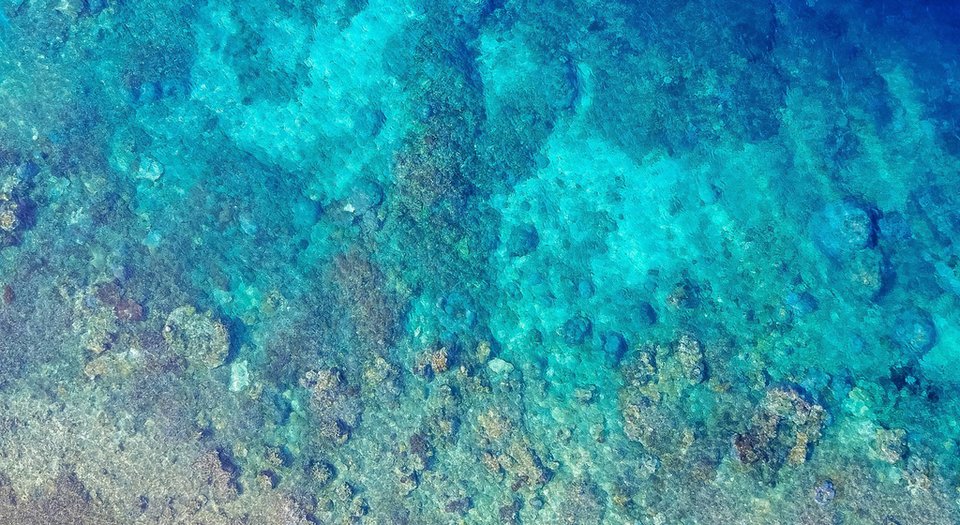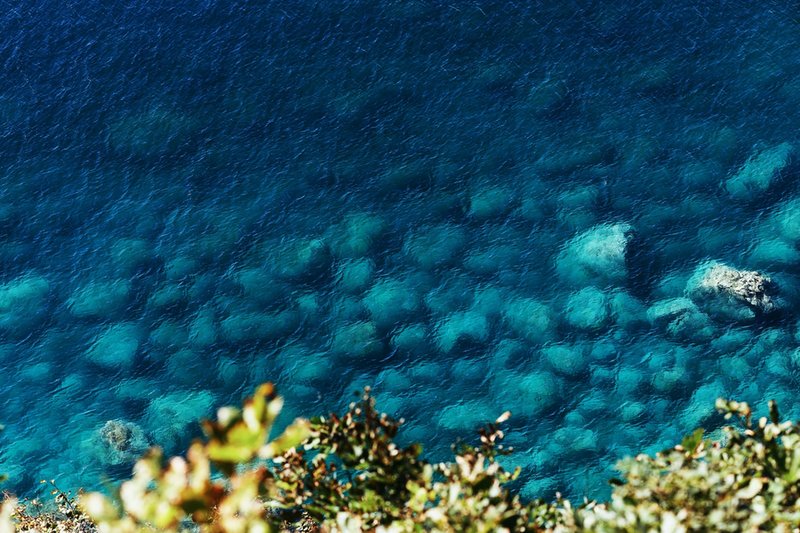
OCEAN MINING
Under the sea: could the seabed provide the resources for a green future?
As the demand for ethically sourced battery metals grows faster than supply can keep up, deep-sea mining could potentially unlock scores of unexploited minerals essential to the green transition. Matthew Hall looks at how a new initiative from the World Economic Forum may help.
It’s no secret that battery metals – the likes of graphite, lithium, and cobalt – are integral to the world’s green transition, and we need more of those minerals quickly if we are to successfully decarbonise industries and economies around the globe. Estimates by the World Bank suggest a necessary production increase of almost 500% by 2050 to satisfy the growing demand for these materials across EVs, renewable energy systems, and more – all while keeping global average temperature rises below 2°C.
The question of how to get these minerals in sufficient quantities, and in an environmentally and socially ethical way so as to not undermine the purpose of the green transition, has been a weight on the shoulders of miners, clean technology companies, and EV manufacturers for a good while now.
Just this year, Tesla CEO Elon Musk has pledged “a giant contract” to any company able to extract large quantities of nickel sustainably, joined the Fair Cobalt Alliance to support ethical cobalt mining in the Democratic Republic of the Congo (DRC), and even secured rights to 10,000 acres in Nevada where he plans to mine lithium for Tesla’s batteries.
Unethical practices in cobalt mining
Cobalt in particular has attracted attention owing to unethical practices, including child labour, in the country that dominates its production: the DRC. The Central African country currently accounts for 65% of the world’s cobalt supply, with this figure expected to rise to 73% in the next three years.
It is, understandably, a sticking point – businesses aiming to grow out of the green transition and move to clean technologies need cobalt, but don’t want to be seen to have environmentally or socially destructive practices anywhere in their supply chains.
Fortunately, the sea could well be a saviour. Cobalt crusts, layers on the seafloor, contain large amounts of cobalt, nickel, manganese, and other metals that could potentially exceed the resources contained in land deposits.
And for the Cook Islands, a small nation in the South Pacific, the cobalt in its surrounding seabed could be a lucrative means to diversify its economy, with some projecting that the small island nation could account for 10% of the world’s annual cobalt supply.
It’s an issue that presents opportunities and risks for a variety of stakeholders, from prospective seabed miners and the downstream supply chain, to local communities and leaders, and indeed the wider global community given the potential knock-on effects of commercial seabed mining. Before any serious strides can be made in this sector, these voices must all be heard, and a collaborative process for solutions needs to be enacted. But how can this be achieved?
Opening a dialogue on deep-sea minerals
The World Economic Forum’s recently launched Deep-Sea Minerals Dialogue aims to facilitate an impartial space for these issues to be discussed among stakeholders who may not have been involved in the topic to date – battery manufacturers, EV companies, or the metal markets. All of these have a “stake” in the advancement of seabed mining and the sustainability issues surrounding the practice, according to World Economic Forum operations transformation lead Winnie Yeh.
“For these companies, responsible brands that are looking at sourcing minerals responsibly, what is this new potential mineral source’s impact on their responsible sourcing strategy? How should they weigh these opportunities and risks against each other? And how does this weigh against current opportunities and risk for land-based mineral resources? These are questions we are going to be discussing with many of these companies,” Yeh explains.
The Forum is currently raising awareness with these stakeholders throughout the value chain to alert them to the importance of this topic and how they can engage with it. Whether it’s the miners themselves or EV manufacturers and green energy companies that depend on these minerals, the Forum presents an opportunity to be involved in the debate on how, and whether, this emerging industry is to proceed – and potentially help shape a framework for responsible practices in the sector.
How does this weigh against current opportunities and risk for land-based mineral resources?
If it goes ahead, commercial exploitation of deep-sea minerals could have wide ranging consequences for a variety of stakeholders.
“While the target audience we want to bring into this topic is the downstream brands, to inform it on an impartial basis, we're also engaging with scientists that have been working on this topic, the seabed mining contractors, and the different environmental organisations that are actively working on this topic,” Yeh says.
The relative youth of seabed mining as a commercial prospect means it’s not fully understood what potentially harmful effects may arise from the practice, and how these can be mitigated. A collaborative, impartial environment fostered by the Forum could help to better understand these issues.

The significant unknowns of deep sea mining
We know very little about our oceans, so it’s no surprise we don’t yet fully know what the effects of widespread commercial mining of deep-sea minerals would be.
“The deep seabed has an estimate of cobalt ranging from six to eight times the base reserves, so it’s quite large quantities,” says Yeh. “And as with any extractive industry, there is both opportunity and risk with these minerals. Certainly on the one hand, reports show this could be a cheaper and less carbon-intensive mineral source.
“On the other hand, we know so little about the deep sea, a lot of the science is still being studied – so the environmental effects and how they can be managed, we still have a lot of unknowns there.”
The deep seabed has an estimate of cobalt ranging from six to eight times the base reserves.
Those unknowns are not insignificant. Heavy machinery scraping the seafloor to access and extract minerals can wholly alter or destroy the habitats of deep-sea life, potentially leading to the loss of species or a fragmentation of delicate ecosystem structures. Many deep-sea species are endemic, only occurring in specific areas, meaning mining operations could risk wiping out entire species if they are not careful.
Scientists have similarly expressed concerns over sediment plumes, the disturbance of silt, clay, and microorganisms creating plumes of suspended particles that may disperse beyond the mining area. It is unknown how long it may take these plumes to resettle on the seafloor, and whether displacements such as these could put deep-sea ecosystems at risk.
A recent Greenpeace report into the prospect of commercial deep-sea mining warns of potential “irreversible environmental damage” extending beyond the immediate effects on island nations and others that sponsor the practice.
Fish populations and other marine creatures may be subject to mining-generated noise and light pollution, with the impacts of this disruption potentially jeopardising food security. Research in 2018 warned that “communities that rely on fish stocks for subsistence could be particularly vulnerable to the impacts of seabed mining”.
// Main image: 3D System Model and Completed Installation. Credit: Deimos
Work is underway to regulate seabed mining
It’s expected that seabed mining will become a commercially viable practice within the next decade – hence the discussions on the subject taking place now. There’s a lot of work that needs to happen before that point, however, from viable methods to mitigate environmental harms, to regulation of seabed mining.
Work to regulate the seabed, which is regarded as “common heritage of humankind” by the UN Law of the Sea, is currently in progress at the International Seabed Authority (ISA). The ISA was established 26 years ago to organise and regulate all mineral-related activities in the international seabed area beyond the limits of any national jurisdictions.
This means that the ISA is responsible for around 54% of the world’s ocean. The ISA has granted a number of exploration licences to better understand the scope of seabed resources, but mining has yet to be authorised.
Discussions on the Mining Code have been deferred to 2021 due to the Covid-19 pandemic.
“As exploration activities in the Area progress, a major effort is currently underway to develop exploitation regulations to complete what will become a ‘Mining Code’ for the Area,” says ISA Secretary-General Michael W. Lodge. “ISA has led six rounds of stakeholder consultation with its 168 members and 92 observers, including representatives of other international and regional organizations, scientific entities, and civil society.
“The exploitation regulations, which include rigorous environmental protection provisions, will be formally adopted once all 168 members of ISA reach consensus on their content. Discussions on the Mining Code have been deferred to 2021 due to the Covid-19 pandemic and will resume when the ISA Council is able to meet again in 2021.”
// Main image: 3D System Model and Completed Installation. Credit: Deimos
The development of non-ISA regulations
While the ISA works on a Mining Code to govern those international waters, countries exploring resources in their jurisdictions are free to develop their own regulations. The Cook Islands, for instance, regulates its burgeoning seabed minerals industry through the Seabed Minerals Authority. In late 2020, Cook Islands Prime Minister Mark Brown announced that companies interested in exploring the nation’s seabed for minerals had until December to put in their Expressions of Interest.
“I, the Minister for Seabed Minerals, officially declare blocks of Cook Islands’ Exclusive Economic Zone available for exploration,” Brown said at an October ceremony.
“My word of advice to interested applicants: put your best foot forward. This is a long term partnership so we the government want to ensure that whoever we allow to operate in our waters will put forward the best exploration work programme and would leave the best outcomes for our country and our people.”
Work in the Cook Islands to create groundwork legislation and governance mechanisms has been ongoing for several years, but Brown’s announcement came as a sign the country is ready to take the plunge. If seabed mining does become a reality for the Cook Islands, it would be a significant boon to an economy traditionally reliant on tourism – an industry that was brought to a standstill by Covid-19.
// Main image: 3D System Model and Completed Installation. Credit: Deimos